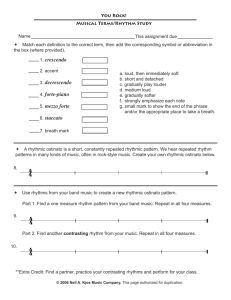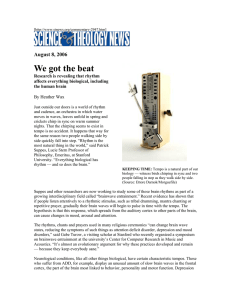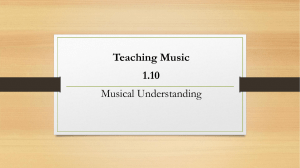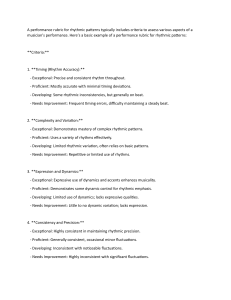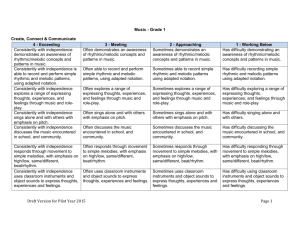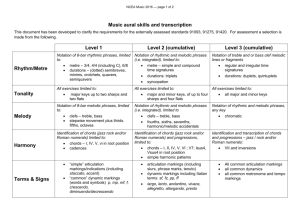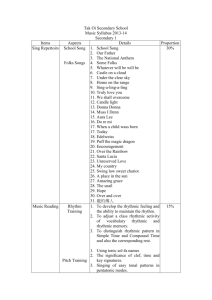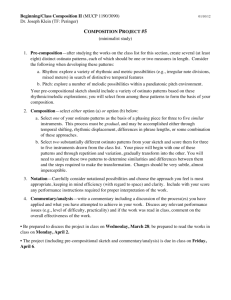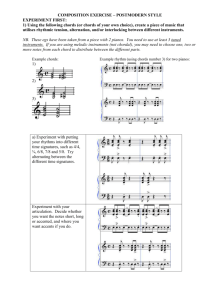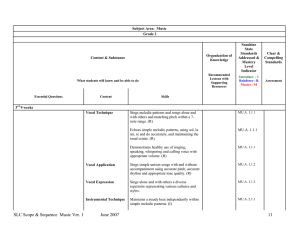A Standards Crosswalk Between Common Core and Music
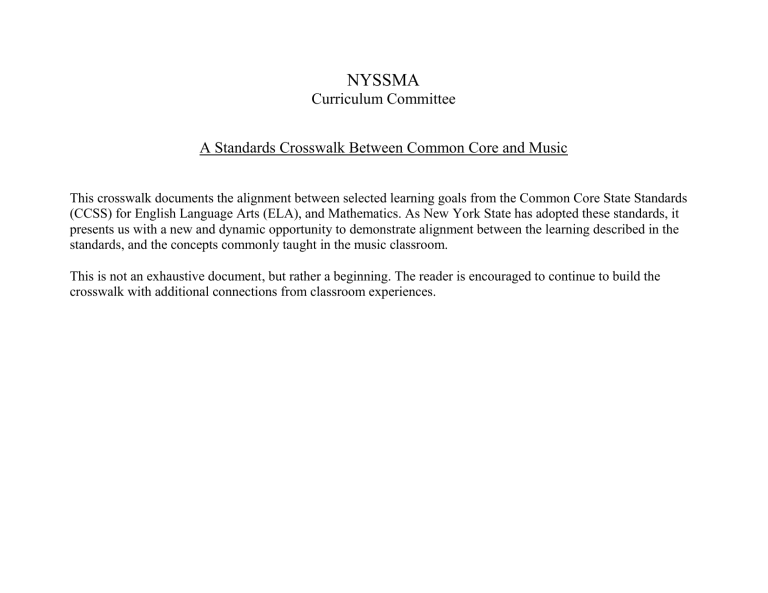
NYSSMA
Curriculum Committee
A Standards Crosswalk Between Common Core and Music
This crosswalk documents the alignment between selected learning goals from the Common Core State Standards
(CCSS) for English Language Arts (ELA), and Mathematics. As New York State has adopted these standards, it presents us with a new and dynamic opportunity to demonstrate alignment between the learning described in the standards, and the concepts commonly taught in the music classroom.
This is not an exhaustive document, but rather a beginning. The reader is encouraged to continue to build the crosswalk with additional connections from classroom experiences.
Strand
Reading for
Literature
Reading for
Information
Reading
Foundational
Skills
Writing
Speaking &
Listening
~ ELA ~
Core Curriculum standard
Recount stories, fables, etc.
Words/phrases describe rhythm & meaning
Overall structure of story
Different points of view of characters
Identify who is telling story
Compare/contrast 2 or more versions of story
Determine theme and analyze it’s development
Compare/contrast written work to media version
Make connections between written text and other perspectives
Questions re: details of text
Know/use text features
Meaning of domain specific words
Describe overall structure of events, ideas, concepts or info
Distinguish own point of view
Engage in group reading w/purpose & understanding
Print concepts
Phonological awareness
Phonics & word recognition
Fluency
Write opinion supporting point of view
Draw evidence from text for analysis
Write information/explanatory texts
Production and distribution of writing
Short research projects
Write to support analysis of topics or text
Create text in response to literary work
Ask/answer questions to clarify comprehension
Create multimedia presentation of stories or poems
Engage in collaborative discussions
Initiate and participate effectively in collaborative work
Music
Folk songs
Rhythms, patterns, repetition, form
Form
Texture & balance
Timbre (melody/harmony)
Theme & variations
Motivic development
Programmatic composition
Cultural connections to music
Critical listening
Expressive markings in music
Music specific vocabulary
Form
React to music, improvisation
Sing and play with others
Read music notation, follow own part
Sound production, diction, articulation
Lyrics, rhythm, note reading
Music reading, practice for fluency
Critical responses, written critiques
Reflection, improvement plan
Program notes
Program notes
Short research projects
Music critiques
Music composition
Critical listening for performance in ensemble
Create audio recording of performance
Rehearsals, peer evaluation, group compositon
Student-led chamber ensemble(s)
Language
Evaluate speaker’s point of view
Include multimedia components to clarify information
Make strategic use of digital media
Identify connections between words & their use
Correct use for frequently confused words
Use knowledge of language to write, speak, read, listen
Use nuances in word meanings
Distinguish shades of meanings
Acquire & use domain-specific words and phrases
Demonstrate command of conventions of standard English
Analyze music composition
Use music software/tech in composition
Enhance composition/performance through media
Musical vocabulary
Clarify misused vocabulary (hi/low, soft/loud)
Use music vocabulary to describe music
Expressive quality of lyrics
Various tempi/expressive markings
Write or speak about music
Phrasing, articulation, expression markings
~ Math ~
Domain
Counting & Cardinality
Operations & Algebraic
Thinking
Number & Operations-
Fractions
Measurement & Data
Geometry
Ratio & Proportional
Relationships
Understand fractions as numbers
Understand fraction equivalents
Classify objects & count number of objects
Work with time
Measure lengths
Describe & compare measurable attributes
Represent and interpret data
Ratio concepts and use reasoning to solve problems
Core Curriculum Standard
Know number names & counting sequence
Represent addition/subtract with objects
Generate and analyze patterns
Identify and describe shapes
Graph points to solve real-world problems
Making inferences and justifying conclusions from observation
Music
Know rhythmic value of notes and rests
Count basic rhythms
Math problems using note values
Performance of rhythmic/tonal patterns
Musical form
Rhythmic values of notes & rests
Duple/ triple meter
Measures
Sub-division
Rhythm pyramid (whole, half, quarter, etc.)
Time signature
Organize sound over time (rhythmic aspect)
Tempo
Intervals
Science of sound (frequency, amplitude, etc. of sound waves)
Form
Melodic contour
Timbral and pitch qualities of instruments
(size of inst; string length; overtone series, acoustics)
Linear arrangement of rhythmic relationships
(melodic construction- augmentation, diminution)
Vertical arrangement of rhythmic relationships (rhythms lining up between parts)
